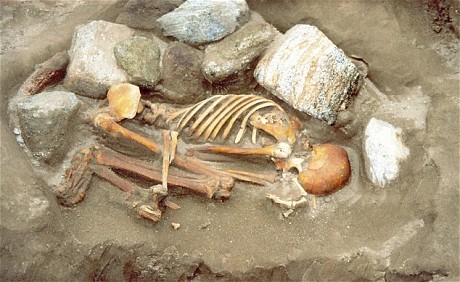The secret ancient library behind the walls of the world’s oldest monastery.//

The fortress-like Saint Catherine’s Monastery at Mt. Sinai houses the world’s oldest continually operating library. -SacredSites.com
Bloggers note: I’ve been visiting a lot of libraries lately but none as old as this old, old, old library. This a re-post of a piece I wrote a while back. Enjoy.
Ever heard of the Sacred and Imperial Monastery of the God-Trodden Mount of Sinai? No? It’s also known as Saint Catherine’s Monastery. Nothing?
If you haven’t heard of it, that’s because this ancient monastery at the foot of Mt. Sinai is so remote that until modern times only the most devout of seekers could get there via ten-day camel ride.
The monastery was built in the mid-6th century AD at what is considered to be the spot where Moses saw the burning bush. Known to have been occupied by Christians since at least as far back as the 4th century AD, the site, in fact, claims to host the original living bush that Moses witnessed.

Monk studying at Saint Catherine’s Monastery library – among the world’s most exclusive libraries. -beautiful-libraries.com
Just as amazing is that Saint Catherine’s also claims the worlds oldest continually operating library, stuffed with 5,000 early books, 3,500 manuscripts and 2,000 scrolls – a collection rivaled only by the Vatican. This is also one of the most exclusive libraries in the world. Only the monks of the monastery and select clergy and scholars are allowed in.
I am so fascinated with libraries – especially old ones – that I made a monolithic, centuries-old library the central battleground of my thriller The League of Delphi. And the fact that this library is surrounded by a virtual fortress makes it ten times more fascinating and meaningful to the story.
After a millenium and a half of cloistered existence Saint Catherine’s is now bringing the collection to the world through the tools of the digital age but the library itself remains inaccessible to most outsiders.
Now, here’s the cheese on this Brain Burger.
3 books you might find in the world’s oldest library:
- Twilight: The Dawn of History
- The Genghis Khan Cookbook: Feeding a Band of Marauding Barbarians on a Budget
- Fifty Shades of Black: A Monk’s Wardrobe Confessions
SPREAD THE CONSPIRACY – GET “THE DELPHI DECEPTION: BOOK II OF THE DELPHI TRILOGY” NOW!
–
What librarians are saying about The Delphi Trilogy:
“The League of Delphi by Chris Everheart is super suspenseful and unputdownable in the best sense of the word. A great readalike for kids who have plowed through Percy Jackson and The Hunger Games. We have multiple copies of the book and they have not been on the shelf since we bought them. Teen patrons have loved The League of Delphi.” – Hannahlily Smith, Teen Coordinator, Johnson City Public Library, Johnson City, TN.
“Fast-paced and well written, this thrilling mystery sucks readers in and leaves them anxiously waiting for the next installment of the trilogy. This is exactly the type of book teens enjoy and it will draw in even the most reluctant readers.” – Kiersten Doucette, Teen Services Librarian, Naperville Public Library, Naperville, IL
Readers rave about The Delphi Trilogy:
“Read. This. Book! Each chapter leaves you on the edge of your seat, and it all leads up to one of the most exciting endings I’ve read in a long time.”
“It has it all: romance, intrigue and suspense… and very well written characters.”
“From the very first page to the very last page I felt like I was on this wild ride.”
“Even the most reluctant of reluctant readers will have a hard time putting these books down.”
Related articles
- Library Days, Library Nights (chriseverheart.com)
- Rousing the Reading Rabble (chriseverheart.com)
- Electric Libraryland (chriseverheart.com)
- The Ark of the Wilderness, St. Catherine’s Mount Sinai, prepares to share its treasures online (areluctantsinner.blogspot.com)
- 11 Wonderful Libraries in Africa (mentalfloss.com)



























